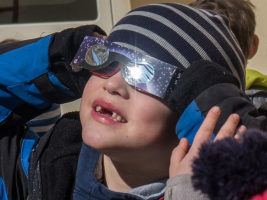What can we tell about the great American eclipse of 21 August 2017?
Scientists have used data from solar eclipses to discover a slew of accurate and fascinating facts about our universe. There is very little we know about the observable universe, and the manifestation of the interaction of the celestial bodies helps scientists find new facts that range from the discovery of new metals or the curvature of the universe.
Also Read : How to Choose Best Venue for Office Christmas Party
What Makes For Effective SEO And How To Take Advantage Of It
The sun is earth’s closest star. However, its brilliant light makes it quite impossible for astronomers to observe the surface of the sun and its atmosphere. The intense light from the core drowns the interactions of particles in its corona. The corona becomes completely visible when the moon blocks the sun entirely.
Observing the sun’s “atmosphere.”
You can see the corona along the path of totality too, that too without protective eyewear. The particles seem to create swirling and flowing patterns that stem out from the sun’s surface and back. Pasachoff has been studying solar eclipses for the last 45 years. He is an astronomer at Williams College, Massachusetts.
How to Complete Your Solar Eclipse Merchandise Collection This Year?
Budding Smart Communication Alternatives for Small-Business Phone Systems
According to Pasachoff, the corona is the wispy part of the sun that remains invisible to us for the rest of the year. This is comparable to the earth’s atmosphere in structure, and it becomes visible only during times like the great American solar eclipse August 21, 2017.
Solar cycles and total eclipses
A solar cycle lasts for 11 years. During each cycle, the sun transitions from its solar maximum to its solar minimum. The solar particles streaming from the surface of the sun in the form of solar wind and solar flares reach its highest and lowest. Even a couple of years ago, the pattern of solar flares was unknown to scientists.
NASA states that, with the current technology, bodies of astronomers and scientists can now study the coronal mass ejections or CMEs with ease. During the total darkness of a full solar eclipse, scientists can see the behavior of charged particles.
Some General Facts about Breeder’s Cup and Horse Racing That You Should Know!
How to Not Buckle Under Pressure of Holiday Season Web Traffic
The charged particles that move in the corona make the magnetic fields of the sun quite apparent to the observers only when the sun is hiding behind the moon.
This will help scientists study the sun’s magnetic properties and understand the link between the solar flares and increasing space temperatures during the great American eclipse.This will be one of the rare events that led to the discovery of Helium on the sun’s surface.
Observing the changes during totality
Today, scientists can create temporary eclipses on the earth by using special telescopes to study the sun’s corona. However, these instruments, known as a coronagraph, have their limitations. The mock eclipses have many artifacts and are not ideal for the deduction of facts.
When the moon covers the sun’s face on August 21, 2017, other planets including Mercury and Venus will become visible. This will allow scientists to observe their relative motions on the sun during the eclipse. Mars and Jupiter will also come into view during the total eclipse.






One Response
thank you bro
Comments are closed.